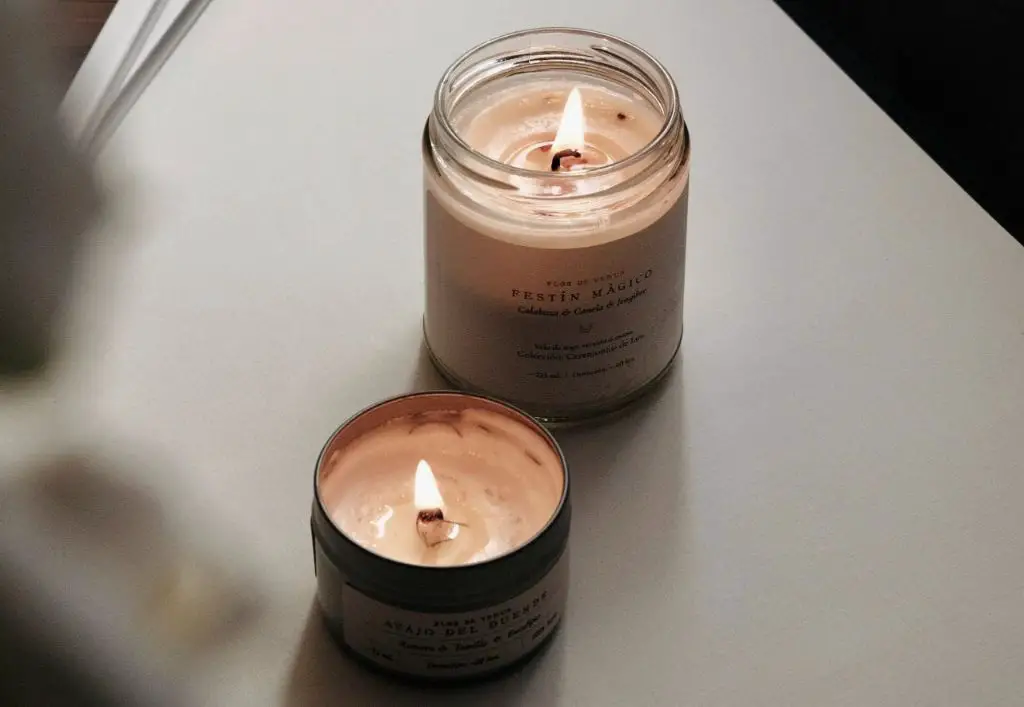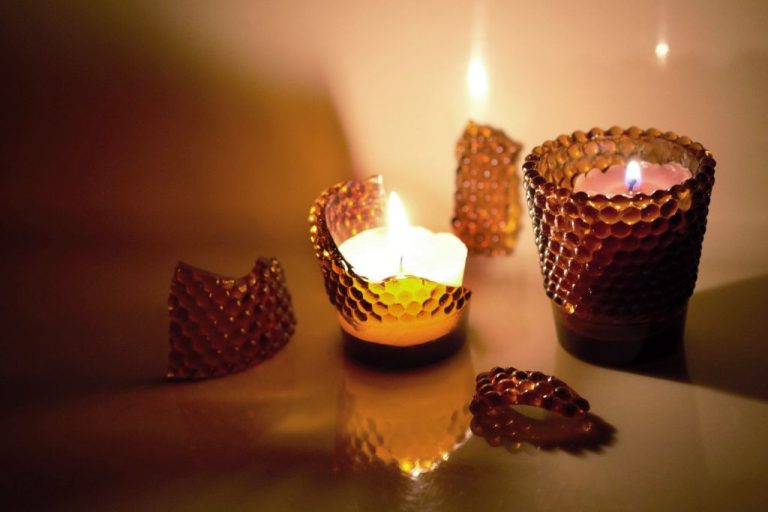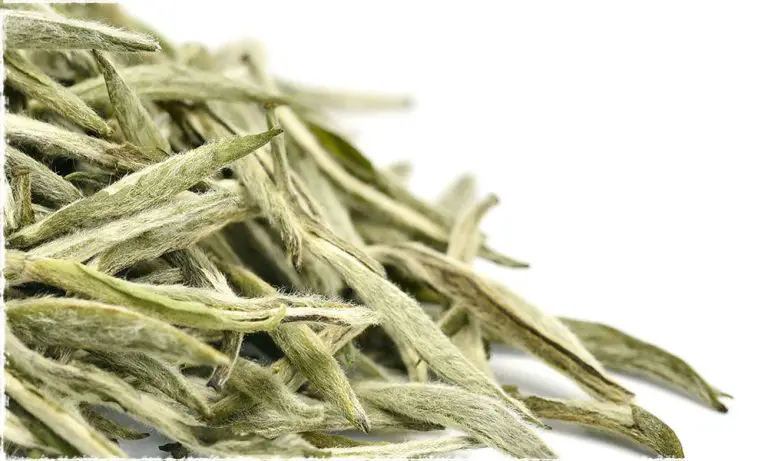What Candles To Avoid?
Introduction
Many people enjoy having candles in their home for the ambiance and scent they provide. However, not all candle types are created equal. Certain types of candles can release harmful chemicals and particles into the air when burned, which can be hazardous for our health. It’s important to educate ourselves on which candles to avoid so we can make informed choices and maintain a safe and healthy home environment. This article explores several common types of candles to use caution with or avoid altogether, and provides recommendations for safer candle options.
Lead-Wick Candles
Lead-wick candles contain a metal core made of lead that enables the wick to bend as the candle burns (1). When these candles are lit, the lead core vaporizes and releases toxic lead into the air. Lead is a heavy metal that is poisonous if inhaled or ingested, especially for young children (2).
In 2003, the U.S. Consumer Product Safety Commission banned lead-cored wicks in all candles sold in the United States (3). This ban was in response to studies showing concerning levels of lead emissions from lead-wick candles. Despite the ban, some unsafe candles imported from other countries still contain lead wicks.
Consumers should be aware of checking candle wicks and avoid buying or burning any candles that have metal wire wicks, which may contain lead. Lead exposure can cause developmental problems and brain damage, especially in children, so it’s best not to take any risks with lead-wick candles (1).
Candles with Synthetic Fragrances
Many scented candles contain synthetic fragrances that can release harmful chemicals like phthalates into the air when burned. According to research, phthalates are commonly used in candle fragrances to help bind the scent to the wax (https://www.awarecandleco.com/blog/what-are-phthalates-and-why-are-they-harmful). When inhaled, phthalates have been linked to a variety of health issues including hormone disruption, asthma, breast cancer, obesity, type II diabetes, neurodevelopmental issues, and more.
A recent study found concerning levels of phthalates in the air of homes that frequently burned scented candles (https://www.ncbi.nlm.nih.gov/pmc/articles/PMC9832800/). The researchers recommended avoiding synthetic fragrance candles or ensuring proper ventilation when burning any scented candle.
Other hazardous chemicals like benzene and toluene can also be released from synthetic scented candles. These compounds are known carcinogens and toxicants. The best practice is to choose only phthalate-free, non-toxic candles made with essential oils or natural ingredients.
Paraffin Wax Candles
Paraffin wax is a petroleum byproduct made from crude oil refining. It is commonly used to make candles because it is inexpensive and easy to work with. However, paraffin wax releases toxins like benzene and toluene when burned, which are known carcinogens. It also emits large amounts of soot or black carbon.
The soot released from paraffin wax candles contains many concerning substances like polycyclic aromatic hydrocarbons (PAHs), aldehydes, ketones, and more. Studies show PAH exposure can cause DNA damage and cancer. The soot settles on surfaces, circulating back into the air we breathe. The particles are small enough to penetrate deep into the lungs. Long-term exposure to candle soot is associated with respiratory issues and lung inflammation.
Soot can also create black marks on walls and furniture. The wicks contain metals that get released into the air as soot when burned. Overall, paraffin candles are highly polluting and hazardous to health. It’s best to avoid this type of candle, especially for those concerned about indoor air quality.

Gel Candles
Gel candles are made from a mixture of mineral oil and polymers that create a thick, gel-like wax. While they can look beautiful when lit, gel candles pose some safety concerns compared to other candle varieties.
One issue with gel candles is the toxicity of the fuel. Gel fuels often contain mineral oil, which can release more air pollutants like soot than standard wax candles when burned. The soot released can stain walls and surfaces, and the fumes may cause respiratory irritation for some. Gel candle fuels also tend to be petroleum-based, raising environmental concerns over their production and use.
Additionally, gels burn at a higher temperature compared to wax. This increases the risk of fire if left unattended or too close to flammable materials. Gel candles should be burned no more than 1-2 hours at a time and should be extinguished and cooled completely before moving to prevent spills and burns.
Soy Candles
Soy candles are often marketed as a natural, eco-friendly alternative to paraffin candles. However, soy wax can trigger allergic reactions in people with soy allergies. The proteins in soybean oil can become airborne when burned, potentially causing allergy symptoms like coughing, sneezing, and skin irritation (Source 1). Even individuals without known soy allergies may develop sensitivities over time with repeated exposure to soy candle fumes (Source 2).
Additionally, soy candles tend to produce more soot than beeswax or vegetable-based candles. The black smoke released can stain walls and surfaces. For people concerned about air quality and cleanliness, this is an important downside to consider.
Beeswax Candles
Beeswax candles are made from wax produced by honey bees. They have some pros and cons compared to other candle types:
Pros of beeswax candles:
- Burn longer – Beeswax has a high melting point which makes candles last longer (cite: https://www.thefarmerscupboard.com/blogs/bees-honey/pros-and-cons-of-beeswax-candles)
- Non-toxic – Beeswax is a natural material that does not release harmful fumes when burning (cite: https://thelobolife.com/pros-and-cons-of-beeswax-candles/)
- Reusable – Beeswax can be melted and reused to make new candles
Cons of beeswax candles:
- Expensive – Beeswax is more expensive than other candle waxes so candles cost more (cite: https://www.greenerlyfe.com/blog/pros-and-cons-of-beeswax-candles-we-review-the-facts/)
- Limited colors – Naturally colored beeswax candles come in a limited color palette
- Messy – Beeswax can get messy during the candle making process
Essential Oil Candles
Essential oil candles have grown in popularity due to claims of therapeutic benefits from aromatherapy. However, there are some potential concerns when burning candles containing essential oils.
Some essential oils can irritate the airways or even become toxic when burned, which defeats the purpose of their intended benefits (Can I use Essential Oils in Soy Candles-Is it Safe?, 2018). Certain oils like cinnamon, citronella, and peppermint are more prone to this. Breathing in essential oils from candles can also cause sensitivities in some people.
It’s best to use essential oil candles sparingly and make sure the room is well-ventilated. Test a small amount first before burning for long periods. Those with asthma or allergies may want to avoid essential oil candles altogether.
Citronella Candles
Citronella candles contain citronella oil, which is a natural insect repellent. However, there are some potential dangers associated with citronella candles:
The fumes from citronella candles can be irritating to the eyes, nose, and throat. Breathing in large amounts of citronella oil vapor may cause headaches, nausea, or dizziness in some individuals (NY Times).
Citronella oil is toxic to pets, especially cats. Ingestion can cause liver damage. The smoke may also irritate their respiratory tract (Swat Mosquito Systems).
The insecticide effects of citronella candles are limited. Research shows they are not very effective at repelling mosquitos, especially outdoors. The smoke and scent disperses quickly (Hunker).
Never burn citronella candles indoors or leave them unattended. The EPA considers citronella oil pesticide and the candles pose a fire hazard.
Safest Candle Options
When it comes to choosing the safest candle options, look for ones made from natural waxes like soy, coconut, or beeswax rather than paraffin (The Best Non Toxic Candles in 2023). Soy, coconut, and beeswax burn cleaner than paraffin wax, which can release carcinogens and other toxins into the air when burned. Unscented or candles scented with essential oils are best, as synthetic fragrances often contain phthalates and other chemicals. Look for candles with cotton, hemp, or wood wicks, as they produce less soot than lead-core wicks.
Beeswax is one of the healthiest waxes for candles. It’s made from honeycomb produced by bees and burns cleanly and slowly. Soy wax is another good option made from soybean oil. Coconut wax comes from coconut oil and also provides a clean burn. If opting for scented candles, choose ones naturally scented with pure essential oils, which have therapeutic benefits. You can even find candles with wood wicks that crackle when lit for a natural soothing sound.
Making your own candles at home using natural wax, cotton wicks, and essential oils is another way to control the ingredients. When shopping, read labels closely and look for phrases like “non-toxic,” “paraffin-free,” or “clean burning” (A Sustainable, Conscious Buying Guide to Non-Toxic, Paraffin Free and Clean Burning Candles). Avoid candles with artificial dyes and synthetic fragrances. Seek out reputable brands committed to using natural, safe ingredients for the healthiest candle options.




